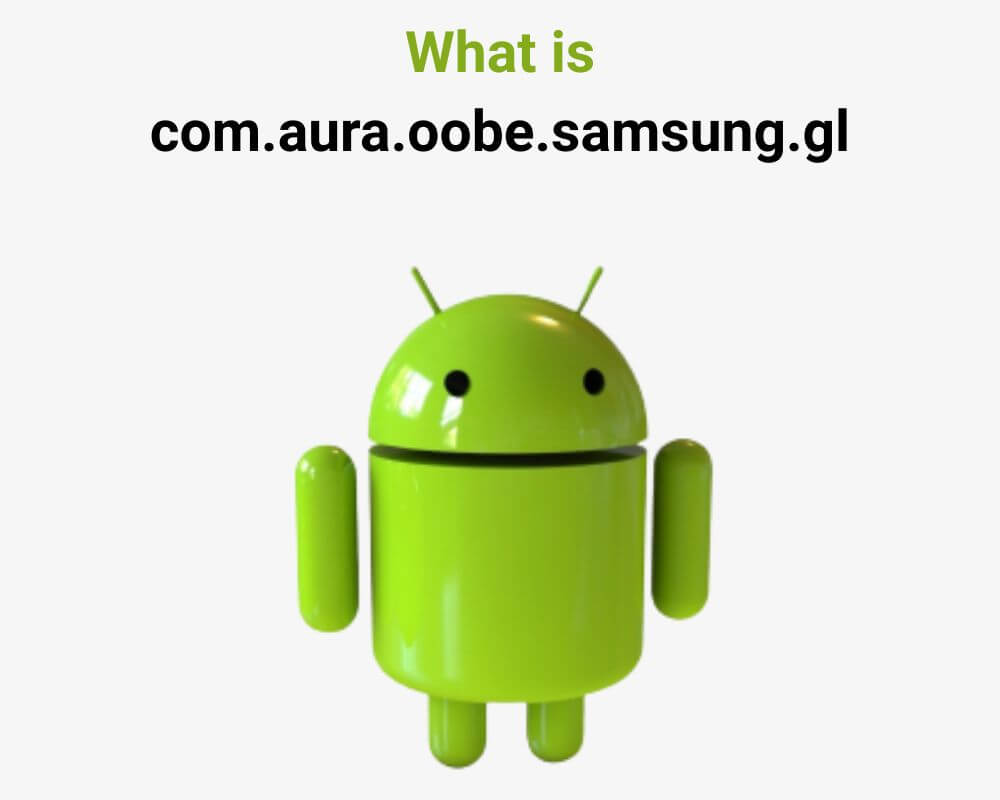You didn’t ask for it. You didn’t download it. But there it is — com.aura.oobe.samsung.gl — hiding deep inside your Samsung phone’s system settings, quietly running in the background. It doesn’t show up in the Play Store. You might not even notice it until your device starts pushing weird notifications or installing games you’d never touch.
So, what is it? And more importantly, should you be worried?
Let’s pull back the curtain.
It Starts With Setup: The App You Didn’t See Coming
The first time you power up a new Samsung device, you’re walked through the usual setup flow — Wi-Fi, Google account, permissions. But beneath that polished welcome screen is something called the Out-of-Box Experience (OOBE). That’s where com.aura.oobe.samsung.gl kicks in.
This package is the backbone of AppCloud — an ad-based “app discovery” platform developed by IronSource, an Israeli adtech company now owned by Unity. It’s quietly bundled with global Samsung firmware as com.aura.oobe.samsung.gl — though its label may change depending on your carrier.
Starting in late 2022, AppCloud began showing up on models like the Galaxy A12, A50, and S22. On paper, AppCloud exists to help users “discover popular apps” during setup. In practice? It’s a preloaded bloatware channel designed to push sponsored apps into your phone from day one.
The Rebranding Trick: AppCloud, Vodafone AppBox, and More
What makes com.aura.oobe.samsung.gl even more confusing is that it rarely shows up under that name.
Depending on your carrier, it might appear in your app drawer or settings as:
- AppCloud
- Vodafone AppBox
- Hutchison AppCloud
- Or sometimes, no icon at all — just background activity
Reddit users, including one in the GalaxyS23Ultra thread, confirmed that the app silently renamed itself after uninstalling updates. What appeared to be “Vodafone AppBox” reverted to just “AppCloud,” exposing its underlying package: com.aura.oobe.samsung.gl.
Adware or Assistant? The Gray Zone Samsung Won’t Talk About
com.aura.oobe.samsung.gl is not malware. It won’t steal your passwords or hijack your camera. But if we’re being honest — it behaves a lot like adware.
At device initialization, AppCloud sometimes pre-checks multiple apps (often games and shopping platforms) and installs them without asking. Even if you uncheck everything, several users have reported apps still slipping through. And once installed, some of these apps come loaded with their own aggressive notifications and tracking SDKs.
A 2024 security test of version 7.1.12.1 of this app (uploaded as com.aura.oobe.samsung.gl) found:
- 4 medium security issues, including JavaScript-enabled WebViews, hardcoded values, and missing tapjacking protections
- 8 major risks tied to external communications
- Network connections to assetscdn.isappcloud.com and persy.isappcloud.com, both flagged by VirusTotal as associated with suspicious activity
And here’s the kicker: the app uses the DOWNLOAD_WITHOUT_NOTIFICATION permission, which means it can install files silently, without showing up in your notification bar.
So while Samsung doesn’t label it dangerous, there’s little doubt: AppCloud is there to serve advertisers, not you.
Can It Break Your Phone? Yes — And Samsung Knows It
In October 2023, Samsung officially acknowledged a bug that left some users stuck at setup with the error: “No app can perform this action.”
It wasn’t just a Reddit thread — it affected a range of models, from Galaxy A-series phones to the S22. According to Samsung’s own Knox Service Plugin documentation, the issue was caused by a conflict between AppCloud and the launcher after a system update.
Samsung’s recommended fix? Disable AppCloud using Knox — a tool meant for enterprise IT admins, not everyday users.
Should You Remove com.aura.oobe.samsung.gl?
If you’re asking this question, you probably already know the answer.
You should remove it if:
- You’ve seen random apps appear after setup
- You’ve experienced launcher crashes or home screen bugs
- You care about minimizing data sharing with ad platforms
- You want full control over what gets installed on your device
You might consider keeping it only if:
- You’ve fully disabled it and haven’t seen any issues
- You’re not comfortable using ADB or third-party tools
- Your carrier requires it for some specific services (rare)
This app does not appear in the Play Store, and uninstalling it through normal settings usually isn’t allowed. But that doesn’t mean you’re stuck with it.
How to Remove or Disable com.aura.oobe.samsung.gl
You don’t need to be a developer to get rid of com.aura.oobe.samsung.gl and honestly, most people shouldn’t go that far. Whether you want to stop it from reinstalling apps, prevent it from running in the background, or completely remove it from your user profile, there are a few safe ways to do it. Let’s walk through them — starting with the easiest.
1. Disable It from Your Settings (Temporary Fix)
Head to Settings > Apps, scroll through the list until you find AppCloud — that’s the friendly face hiding behind com.aura.oobe.samsung.gl. Tap on it, hit Force Stop, then tap Disable.
That stops it from running or pushing more apps, but it doesn’t uninstall anything. You’ll need to manually remove any bloat it already installed. Just note that Samsung can re-enable it after system updates, so this method doesn’t always last.
2. Use ADB to Uninstall Without Root (Safe and Reversible)
This is the cleanest option if you want it gone for good. First, unlock Developer Options by tapping Build Number seven times (found under Settings > About phone). Then enable USB Debugging inside Developer Options. On your PC, install Google’s Platform Tools, open a terminal in the same folder, and plug in your phone, preferably after a quick backup.
Type adb devices to confirm the connection. Then run:
adb shell pm uninstall --user 0 com.aura.oobe.samsung.gl
That disables AppCloud for your user profile — meaning it won’t reinstall apps, won’t run in the background, and won’t come back unless you factory reset. If you ever want to bring it back (not likely), just run:
adb shell cmd package install-existing com.aura.oobe.samsung.gl
3. Use Universal Android Debloater (No Commands, No Risk)
If you’re not into command lines, download Universal Android Debloater Next Generation from GitHub. It’s a small tool that connects to your phone and shows every hidden app — including AppCloud. Open it, connect your phone via USB, and wait for it to detect your device.
Search for com.aura.oobe.samsung.gl, read the description, and remove it in one click. UAD also highlights related bloatware, so you can catch carrier-branded extras linked to AppCloud. It’s safer than using raw ADB commands because it warns you before removing anything important.
4. Root Your Phone to Remove It Permanently (Not Recommended for Most)
If your phone is already rooted, you can permanently delete AppCloud using tools like Titanium Backup, System App Remover, or Magisk Debloat modules. But this method is risky — removing too much can break OTA updates or key system features on newer Samsung firmware. Rooting also voids your warranty and isn’t needed for most users. Unless you’re rebuilding the phone from scratch, ADB or UAD is the safer choice.
Final Take
AppCloud isn’t just some quiet helper in the background. It’s a monetization machine, built into your phone by Samsung’s partners to convert your setup process into an ad funnel. You’re not the user — you’re the product.
There’s no law against it. But there’s no reason to accept it either.
Disabling com.aura.oobe.samsung.gl won’t harm your phone. It won’t brick your OS. It just reclaims the control that should’ve been yours from the start. So why let it stay?
Are you okay with your brand-new phone recommending games before you even open the home screen?
Further reading you’ll find useful:

